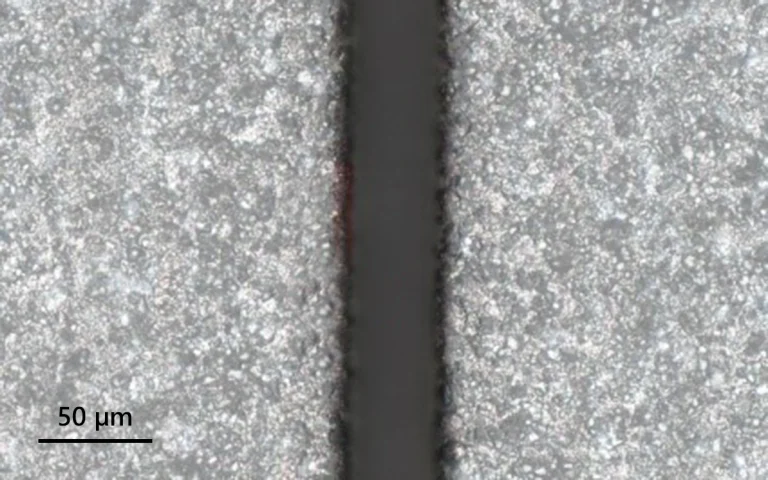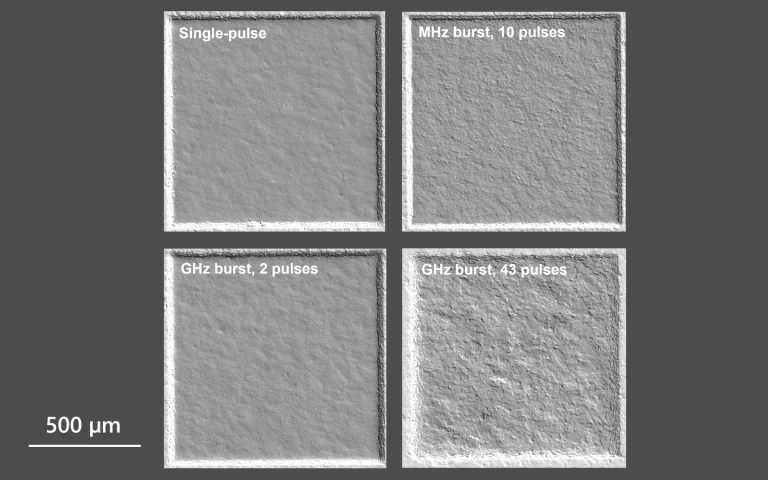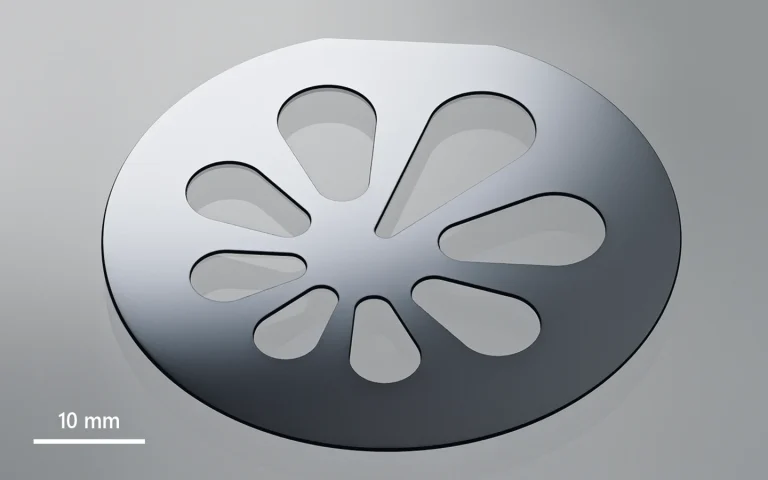Other materials
Compared to traditional methods, femtosecond lasers with their very short pulse durations offer superior precision. Complex 3D structures as well as non-conventional shapes can be obtained.
Femtosecond laser formation of grooves in ceramic
Ceramics are popular dielectric materials known for their exceptional properties, including thermal conductivity, electrical insulation, mechanical strength, and resistance to corrosion and wear. However, conventional mechanical processing methods often require large forces, leading to crack formation and potential breakage of the substrate. Femtosecond lasers offer a solution for processing hard and brittle materials like ceramics, ensuring the highest quality and accuracy.
The FemtoLux 30 was tested in the initial step of scribing ceramic materials – in forming grooves. A comprehensive study was conducted to investigate the scribing speeds and quality using 1030, 515, and 343 nm wavelengths. To estimate the influence of shorter wavelengths, 3 mm length and 50 μm deep grooves were formed on the sample surface. As a result, scribing speeds of 44.1 mm/s were achieved with the 1030 nm wavelength, and the heat-affected zone was reduced from 8.23 μm to 4.88 μm when using the 343 nm wavelength. Additionally, the required depth could be controlled by tuning the pulse energy, with demonstrated depths of 30, 50, and 70 μm.






